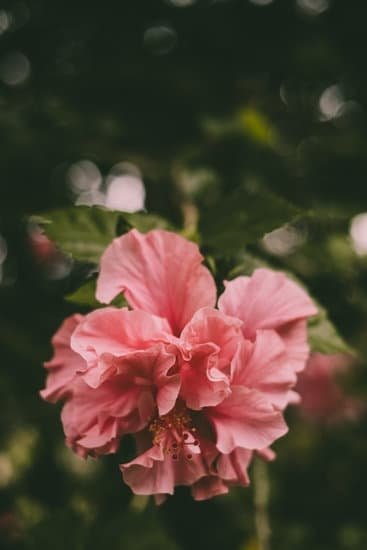Small gardens may be limited in size, but they are certainly not lacking in charm and potential. In fact, the intimate nature of a small garden space can offer a unique opportunity for creativity and personalization.
Whether you have a balcony, courtyard, or tiny backyard, there are countless ways to transform your compact outdoor area into a stunning oasis of greenery and beauty. In this article, we will explore 10 great ideas for small gardens that will help you make the most of your limited outdoor space.
One of the joys of small gardens is their ability to be adapted to fit individual preferences and needs. From vertical gardening and container gardening to creative seating solutions and maintenance tips, there is no shortage of possibilities for turning a petite plot into a picturesque paradise.
Whether you’re looking to grow edible plants, create a tranquil retreat with water features, or simply add a touch of magic with a fairy garden, these ideas are sure to inspire anyone with a small garden space.
So let’s take a closer look at how you can maximize the beauty and functionality of your small garden by exploring 10 innovative ideas that prove small spaces can have big impact in the world of gardening. Whether you’re an urban dweller or simply working with limited outdoor space, these ideas will show that size is no limitation when it comes to creating a beautiful and thriving garden retreat.
Vertical Gardening
One of the most innovative ideas for small gardens is vertical gardening. This technique involves growing plants upward, using walls or other vertical spaces to maximize the use of limited space.
Vertical gardens can be created using various methods such as trellises, wall-mounted planters, hanging baskets, and even repurposed items like old pallets or ladders. This approach not only adds visual interest to a small garden but also allows for a greater variety of plants and flowers to be grown within a compact area.
In addition to utilizing wall space, vertical gardening can also provide practical benefits. By growing plants upwards, it helps to keep the ground clear for pathways or other essential garden elements in a small space.
This method also makes it easier to maintain and harvest the crops, as they are more accessible and less prone to pests or diseases that might affect ground-level plants. Whether you have a tiny urban balcony or a modest backyard, incorporating vertical gardening into your small garden design can truly maximize your green space.
Another advantage of vertical gardening is its adaptability to different styles and aesthetics. From sleek modern designs with clean lines to rustic, charming setups with cascading vines, there are endless possibilities for creating a stunning vertical garden in a small outdoor area.
With the right choice of plants, containers, and supporting structures, you can transform any blank wall into a thriving green oasis. When planning out your small garden, be sure to explore the diverse options offered by vertical gardening to make the most of your limited outdoor space.
Container Gardening
Choosing the Right Containers
When it comes to container gardening, selecting the right pots or containers is essential. Opt for lightweight materials such as plastic or fiberglass if weight is a concern, or consider terra cotta or ceramic pots for a classic look. Ensure that your containers have drainage holes to prevent waterlogging and root rot. Additionally, consider the size of your plants when choosing containers – larger plants will require bigger pots to thrive.
Selecting Suitable Plants
When planning a container garden, it’s important to select plants that are well-suited for potting. Some popular options include herbs like basil and rosemary, flowers such as petunias and geraniums, and even dwarf fruit trees like citrus or figs. Consider the amount of sunlight your garden receives and choose plants accordingly – shade-loving ferns won’t thrive in a sunny spot, just as sun-loving succulents won’t do well in the shade.
Caring for Container Gardens
Maintaining a container garden involves regular watering to keep the soil moist but not waterlogged. Consider using a slow-release fertilizer or liquid plant food every few weeks during the growing season to promote healthy growth. Keep an eye out for pests and diseases that may affect potted plants and take prompt action if any issues arise. Regular deadheading of flowers and pruning of foliage will also help keep your container garden looking its best throughout the year.
Overall
Raised Bed Gardening
Benefits of Raised Bed Gardening
One of the key benefits of raised bed gardening is the ability to control the soil quality and composition. It also allows for better drainage, which can be especially important in small gardens where water can easily collect and cause issues. Additionally, raised beds provide a barrier against pests and weeds, helping to keep your garden healthy and thriving.
Design Ideas for Raised Bed Gardens
When planning a raised bed garden for a small space, consider incorporating tiered or stacked beds to add visual interest. You can also create pathways between the beds using gravel or stepping stones, making the most of every inch of your garden. Consider adding trellises or vertical supports for climbing plants to maximize growing space.
Plant Selection for Raised Beds
Incorporating a variety of plants in your raised bed garden will help create a lush and diverse landscape. Mix ornamental flowers with herbs and vegetables for both visual appeal and practicality. Be mindful of plant height when arranging your raised beds to ensure that taller plants don’t shade shorter ones from essential sunlight.
Raised bed gardening offers endless possibilities for creating beautiful and functional small gardens. By carefully planning your layout, selecting the right plants, and maintaining your garden with care, you can transform even the tiniest outdoor spaces into thriving green havens.
Edible Landscaping
When it comes to small gardens, there are a variety of creative ways to make the most of limited space. One great idea for small gardens is to incorporate edible landscaping, allowing you to grow herbs, fruits, and vegetables right in your outdoor space. Not only does this provide a practical use for your garden, but it also adds beauty and greenery to your surroundings. Here are some tips for successfully implementing edible landscaping in a small garden:
- Choose compact varieties: Opt for dwarf or bush varieties of plants that won’t take up too much space. For example, cherry tomatoes, peppers, and strawberries can all thrive in small garden settings.
- Utilize vertical space: Make use of trellises or hanging planters to grow climbing vegetables like cucumbers or beans. This allows you to maximize your growing area without sacrificing valuable ground space.
- Mix edibles with ornamentals: Integrate herbs and veggies into your existing flower beds or planters to create a cohesive and visually appealing landscape. This not only adds variety to your garden but also makes the most of every inch of space available.
By incorporating edible landscaping into your small garden, you can enjoy the beauty of growing your own food while making the most of limited outdoor space. With careful planning and creative strategies, you can create a bountiful and visually stunning garden that enhances both the aesthetic appeal and functionality of your outdoor living area.
Fairy Gardens
When dealing with a small garden, creating a whimsical and enchanting atmosphere can be the perfect way to make the most of limited space. Fairy gardens are a popular trend that involves miniature plants, tiny accessories, and charming decorations to create a magical outdoor space. Here are some ideas for creating your own fairy garden:
- Choose the right container: Select a small pot or planter that fits well in your garden space. This could be a vintage teacup, an old wooden crate, or even a moss-covered terracotta pot.
- Miniature plants and flowers: Opt for tiny succulents, delicate ferns, or small flowering plants that will fit perfectly in your chosen container. These plants will create the perfect backdrop for your fairy garden.
- Accessories and decorations: Incorporate fairy-sized furniture, tiny houses, whimsical pathways, and other charming accessories to bring your fairy garden to life. Consider adding miniature bird baths, tiny lanterns, and even mini gazing balls for added charm.
By incorporating these elements into your small garden, you can add an element of magic and whimsy to create a truly unique outdoor space that will delight both children and adults alike.
One important aspect of maintaining a fairy garden is regular upkeep. Keep an eye on the growth of your plants and trim them as needed to maintain the scale of your mini landscape. Watering also plays an essential role in keeping your fairy garden thriving; ensuring that the soil is consistently moist without becoming waterlogged is crucial for the health of the delicate plants within it.
Remember that creativity knows no limits when it comes to designing and maintaining your fairy garden in a compact outdoor space. With careful planning and creativity, you can transform even the smallest corner of your yard into an enchanting haven for both fairies and humans alike.
Maximizing Sunlight
When it comes to gardening in small spaces, one of the most important factors to consider is sunlight. Since small gardens often have limited space, it’s essential to make the most of available natural light for the health and growth of plants. Here are some tips for optimizing sunlight in small gardens:
First, take note of the direction of sunlight in your garden. Observe which areas receive the most sunlight throughout the day, as well as any spots that may be shaded by nearby buildings or trees. This will help you determine the best locations for sun-loving plants and flowers.
Another great idea for maximizing sunlight in a small garden is to use reflective surfaces. By placing light-colored stones or gravel around the garden, or incorporating mirrors strategically on walls or fences, you can bounce sunlight around and brighten dark corners.
Additionally, consider vertical gardening to take advantage of sunlight. Utilize trellises, walls, or arbors to grow climbing plants such as ivy or beans. This not only maximizes space but also ensures that these plants receive ample sunlight without taking up precious ground space.
By implementing these tips and ideas, you can make the most of natural light in your small garden and create a thriving outdoor oasis even within limited space.
| Maximizing Sunlight Tips | Data |
|---|---|
| Sunlight direction observation | Determine best locations for sun-loving plants |
| Use of reflective surfaces | Bounce sunlight around and brighten dark corners |
| Vertical gardening | Growing climbing plants such as ivy or beans |
Creative Seating Solutions
As more people embrace apartment living and urban spaces, the popularity of small gardens has surged. When it comes to making the most of a compact outdoor area, creativity is key. One great idea for small gardens is to incorporate cozy seating areas that maximize comfort and relaxation within limited space.
One way to create a cozy seating area in a small garden is by utilizing multi-functional furniture pieces. For example, a bench with built-in storage can provide both seating and a place to tuck away gardening tools or extra cushions. Additionally, folding or stackable chairs can be easily stored when not in use, allowing for more flexibility in the garden layout.
Another idea for maximizing comfort in a small garden is to add soft furnishings such as outdoor rugs and throw pillows. These items can add color and texture to the space while also making seating areas feel inviting and relaxing. To save space, consider using floor pillows or poufs that can be easily stacked or tucked away when not in use.
When incorporating seating into a small garden layout, it’s important to consider the flow of the space. Creating designated zones for different activities – such as dining, lounging, or reading – can help maximize the functionality of the garden. By carefully planning the placement of seating areas, it’s possible to create an inviting outdoor retreat even in the smallest of gardens.
| Idea | Description |
|---|---|
| Multi-functional furniture | Benches with storage or foldable chairs |
| Soft furnishings | Outdoor rugs and throw pillows for added comfort |
| Zoning | Create separate areas for different activities |
Water Features
Adding a water feature to a small garden can create a sense of tranquility and relaxation. Even in limited space, small-scale fountains or ponds can bring a calming element to the outdoor area. The sound of running water can drown out noises from nearby urban areas, creating a peaceful oasis right in your backyard.
When considering adding a water feature to a small garden, it’s important to choose the right size and style that will complement the overall design of the space. A compact fountain or a mini pond with carefully selected aquatic plants can add visual interest and attract wildlife like birds and butterflies.
Incorporating a water feature into a small garden doesn’t have to be complicated or space-consuming. With careful planning and consideration, it’s possible to find the perfect spot for a fountain or pond that will enhance the atmosphere of the garden while also providing soothing sounds and beauty. Remember to consider factors such as maintenance and water supply when choosing the right water feature for your small garden.
Maintenance Tips
In conclusion, small gardens can be just as beautiful and full of life as larger ones, with the right ideas and techniques. By utilizing vertical gardening, container gardening, raised beds, and edible landscaping, even the smallest outdoor space can be transformed into a thriving garden oasis. Additionally, adding fairy gardens and incorporating water features can bring a touch of magic and tranquility to your compact outdoor space.
Maximizing sunlight and creative seating solutions are also important considerations for small gardens. With the right design elements, you can make the most of natural light and create cozy areas for relaxation. And when it comes to maintenance, following some simple tips can help keep your small garden looking beautiful with minimal effort.
Overall, whether you’re working with a tiny backyard or a balcony, there are countless possibilities for creating a stunning small garden. With these 10 great ideas for small gardens in mind, you can turn even the tiniest outdoor space into a vibrant and inviting paradise. So don’t let limited square footage hold you back – get creative and start planning your own little green retreat today.
Frequently Asked Questions
What Should I Plan in a Small Garden?
In a small garden, it’s important to plan the layout carefully to make the most of the available space. Consider what type of plants you want to include, such as flowers, herbs, or vegetables. Choose plants that are suitable for the size of your garden and consider using vertical space with trellises or hanging planters.
How Do You Maximize a Small Garden?
To maximize a small garden, focus on utilizing vertical space by using trellises, hanging planters, or wall-mounted containers. This allows you to grow more plants without taking up precious ground space. Additionally, carefully consider the placement of each plant to ensure they have enough room to grow without overcrowding.
How Do You Make a Simple Beautiful Garden?
Creating a simple and beautiful garden can be achieved by focusing on a cohesive color scheme and well-maintained pathways or edging. Choose a limited color palette for your flowers and foliage to create a harmonious look. Keep paths clear and use attractive edging materials like brick or stone for a polished finish.

Welcome to my gardening blog! I am passionate about plants and enjoy sharing my knowledge and experiences with others. In this blog, I will write about everything related to gardening, from tips on how to get started to updates on my own garden projects.





